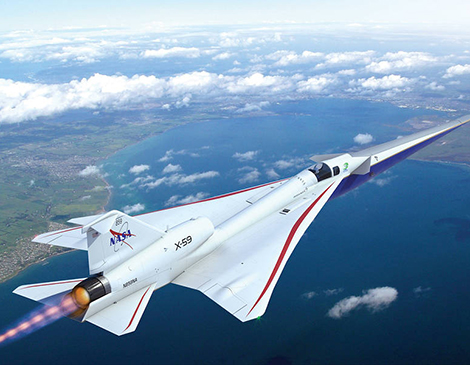There are few things worse than a red-eye flight from Cleveland to Los Angeles, right? Even if you can get a non-stop, you’re looking at more than four hours. But what if you could get there in two-and-a-half? That’s exactly what the NASA Glenn team contributing to the X-59 aircraft — an experimental plane that flies faster than the speed of sound — hopes to help accomplish. Cruising at 50,000 feet, the supersonic aircraft looks like a skinny fighter jet that’s 94 feet long with a 29.5-foot wingspan and can maintain speeds of Mach 1.42 for about an hour.
There’s one pesky problem when you’re traveling at the speed of sound, and that’s the sonic boom. At about 110 decibels, sonic booms are about as loud as an explosion or an AC/DC concert, which might get annoying if you lived near an airport.
So, people like engineer Raymond Castner, the propulsion lead on the X-59 at NASA Glenn Research Center, are working on lowering the boom. The goal the project is to create sonic booms above various test cities in order to test technology designed to quiet the plane and find out just how much sonic boom people in the cities below are willing and able to put up with.
“We’re predicting right now that’s about 75 decibels,” says Castner. “A sonic boom is actually a series of booms that collects as it travels to the ground. New technology allows us to distribute that energy into a series of smaller shock waves that the ear perceives as a softer thump.”
From food to art to development, learn more about the Future of Cleveland.
For more updates about Cleveland, sign up for our Cleveland Magazine Daily newsletter, delivered to your inbox six times a week.




